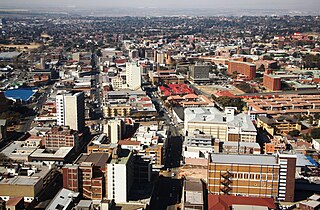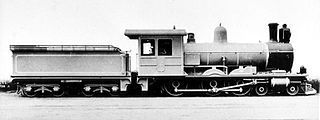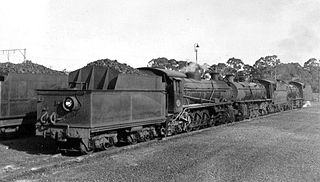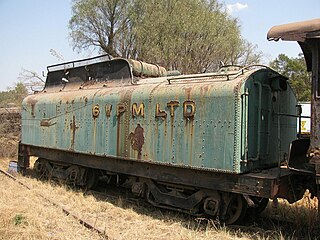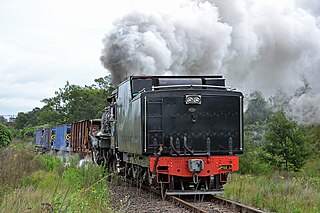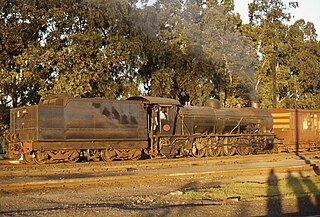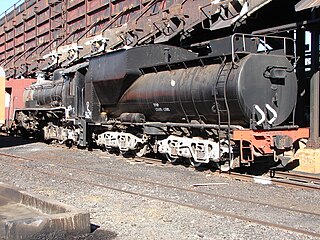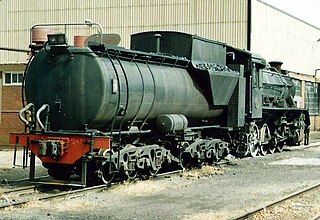Type MP1 tender on SAR Class 15A, c. 1930 | |||||||||||||||||||||||||||||||||||
| |||||||||||||||||||||||||||||||||||
| |||||||||||||||||||||||||||||||||||
| |||||||||||||||||||||||||||||||||||
The South African type MP1 tender was a steam locomotive tender.

A tender or coal-car is a special rail vehicle hauled by a steam locomotive containing its fuel and water. Steam locomotives consume large quantities of water compared to the quantity of fuel, so their tenders are necessary to keep them running over long distances. A locomotive that pulls a tender is called a tender locomotive. Locomotives that do not have tenders and carry all their fuel and water on board the locomotive (itself) instead are called tank locomotives.
Contents
- Manufacturers
- Characteristics
- Locomotives
- Classification letters
- Modifications and rebuilding
- Modifications
- Reclassification to Type XP1
- Rebuilding to Type MR
- Illustration
- References
The Type MP1 tender first entered service in 1912, as tenders to the Class 124-8-2 Mountain type steam locomotives which were acquired by the South African Railways in that year. [1] [2] [3]





